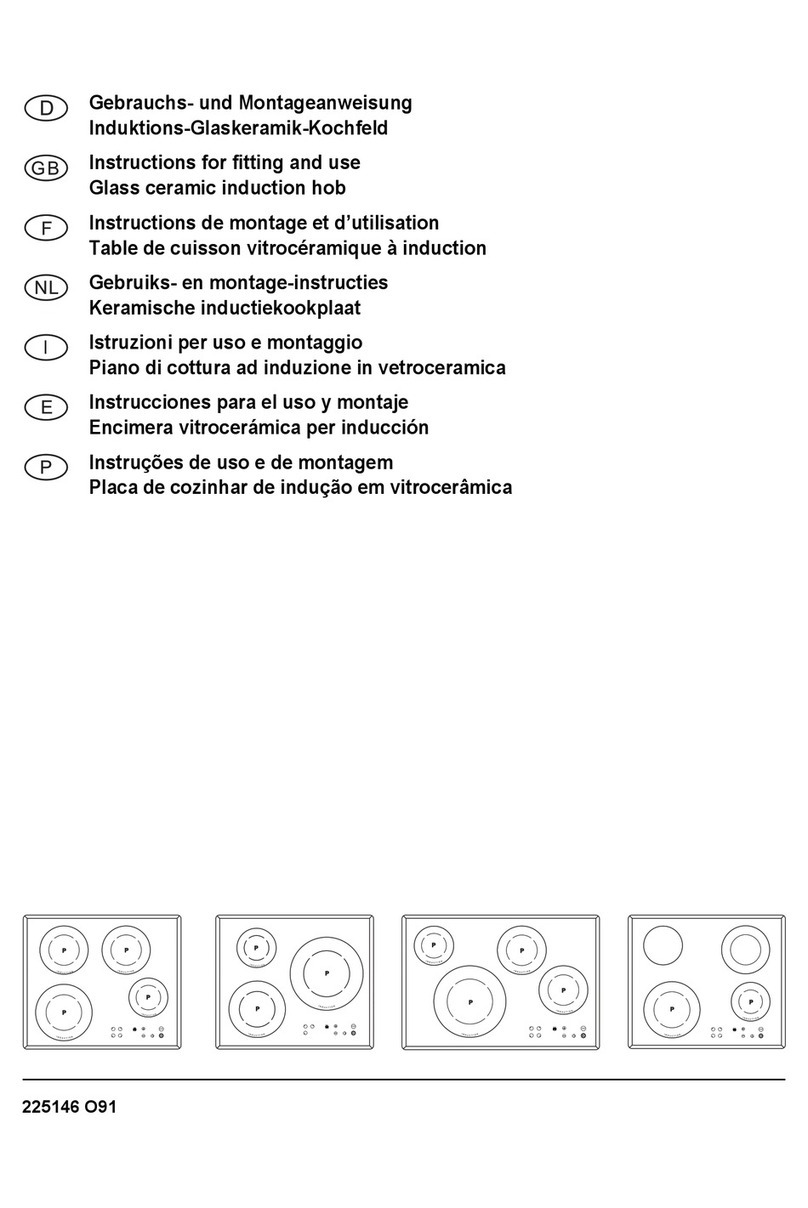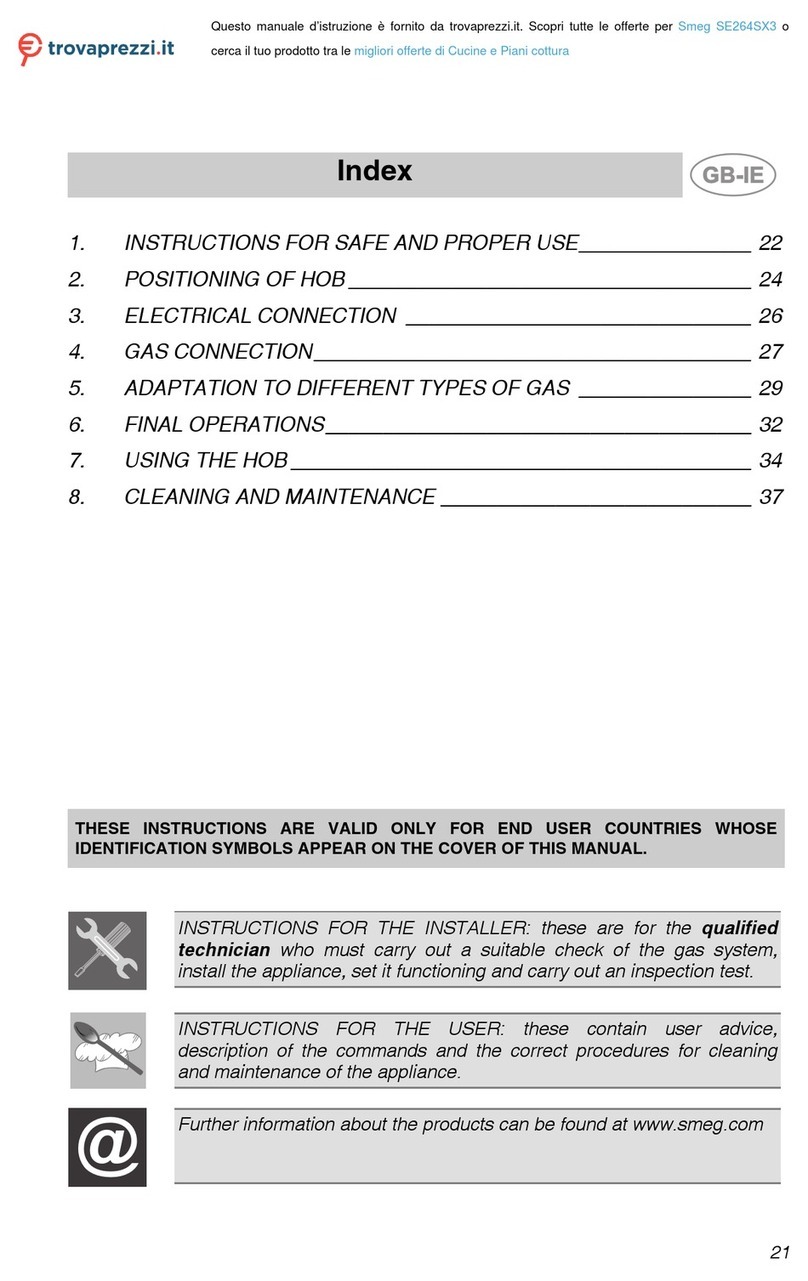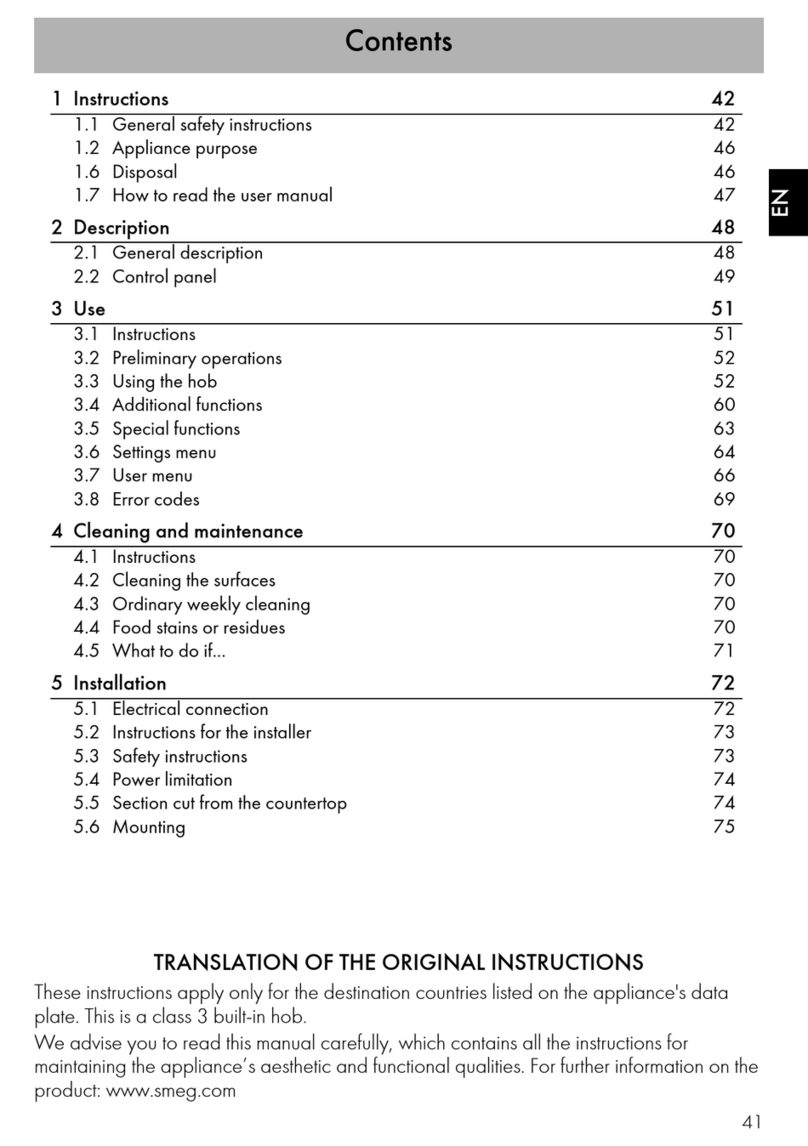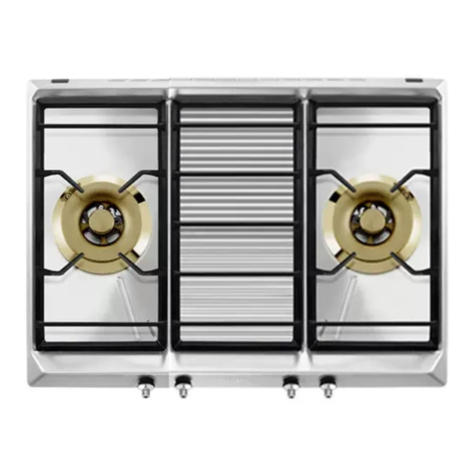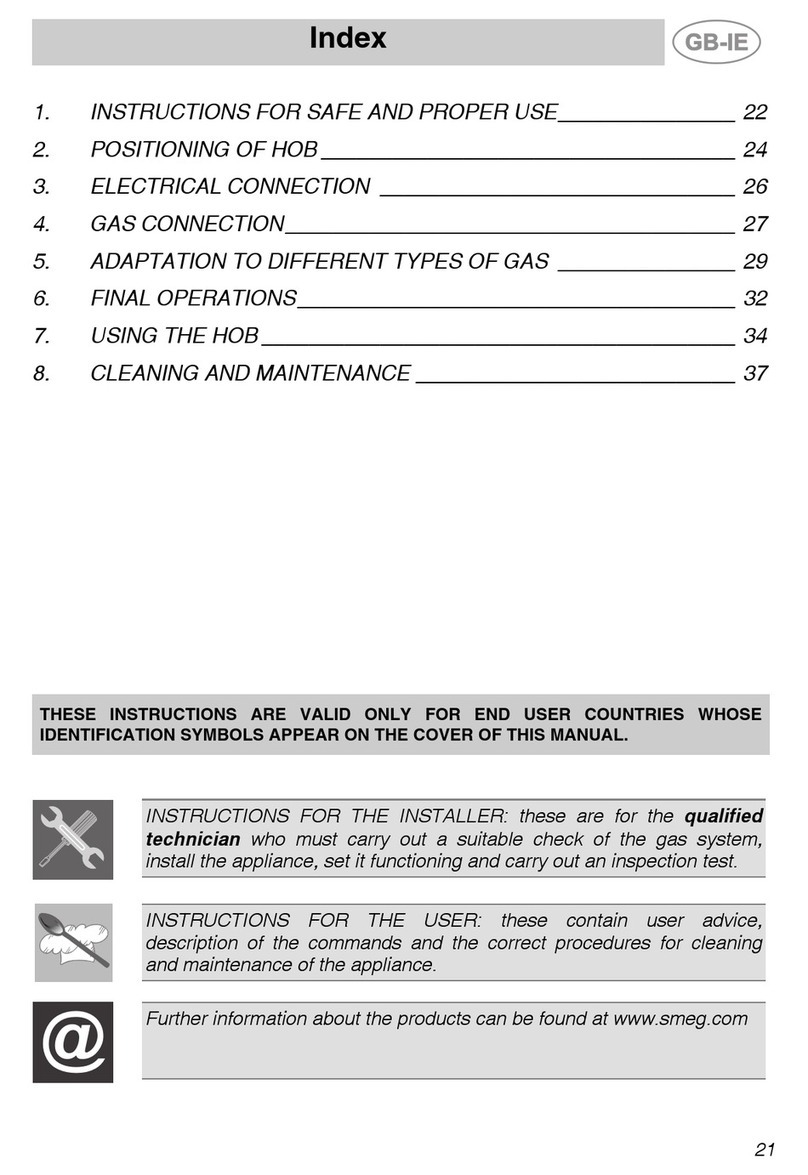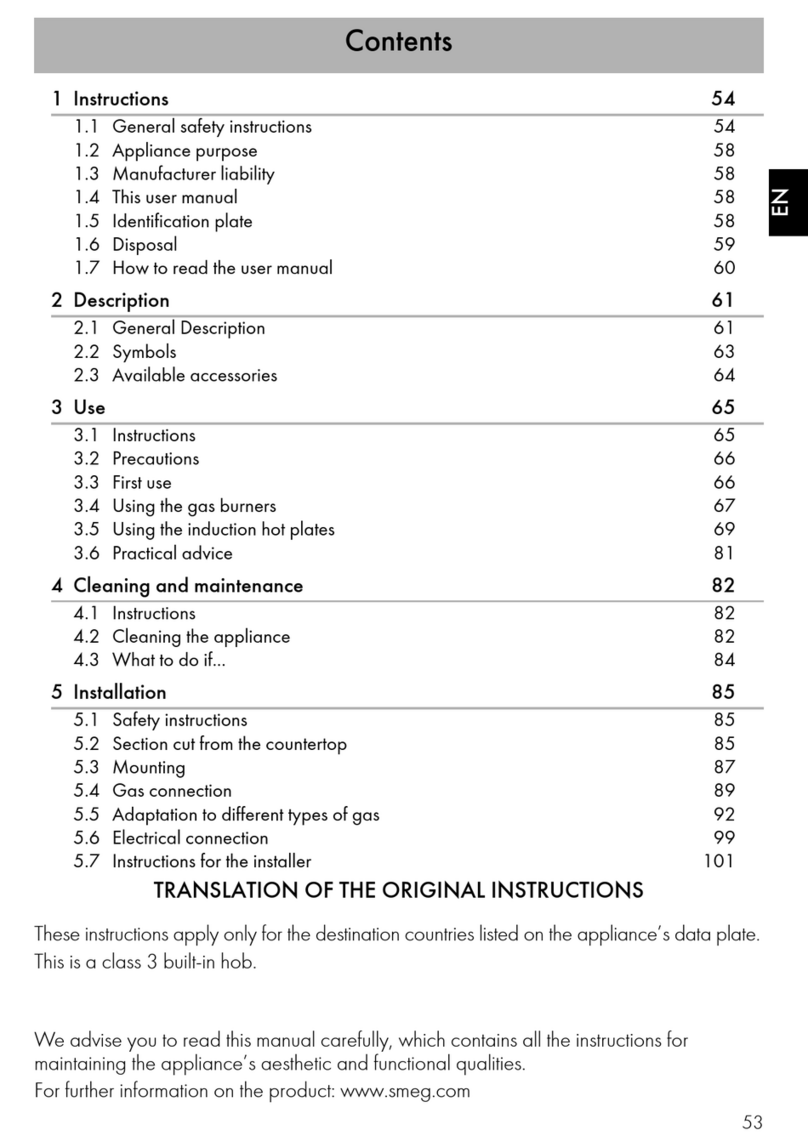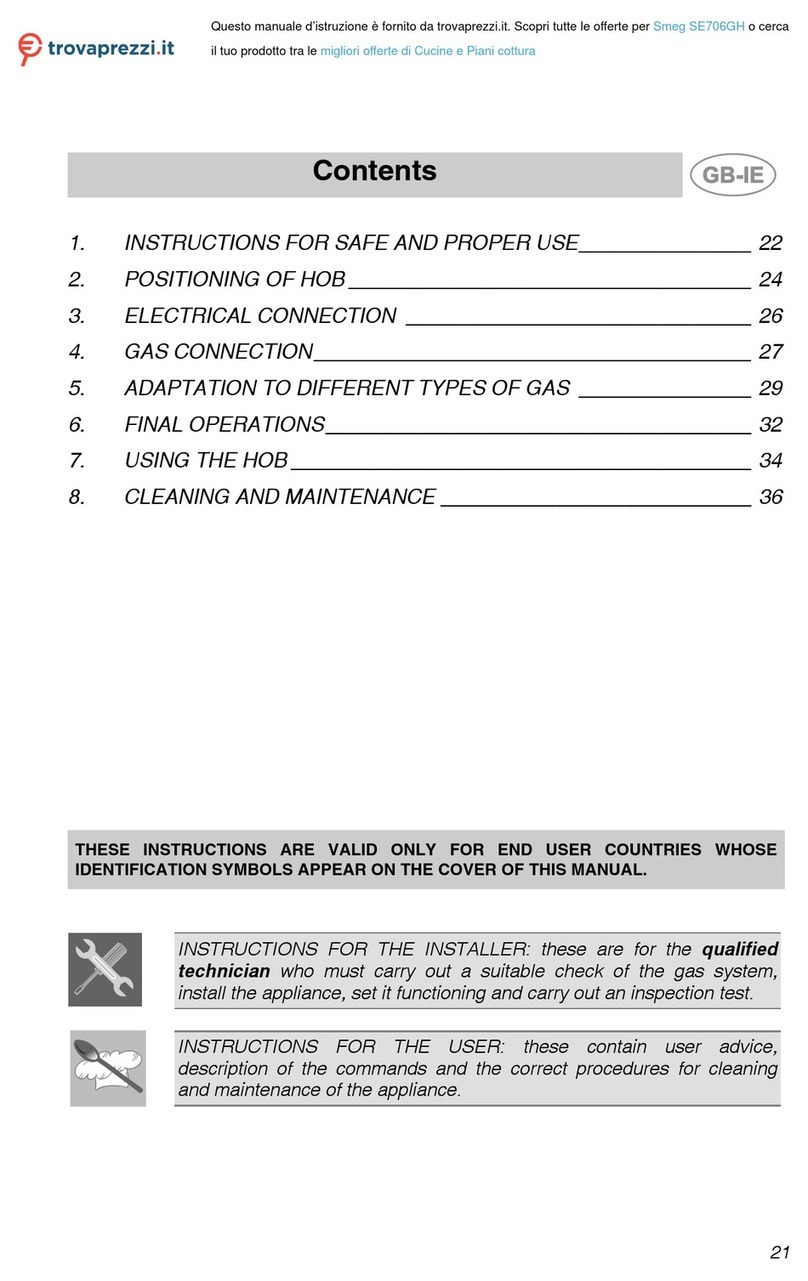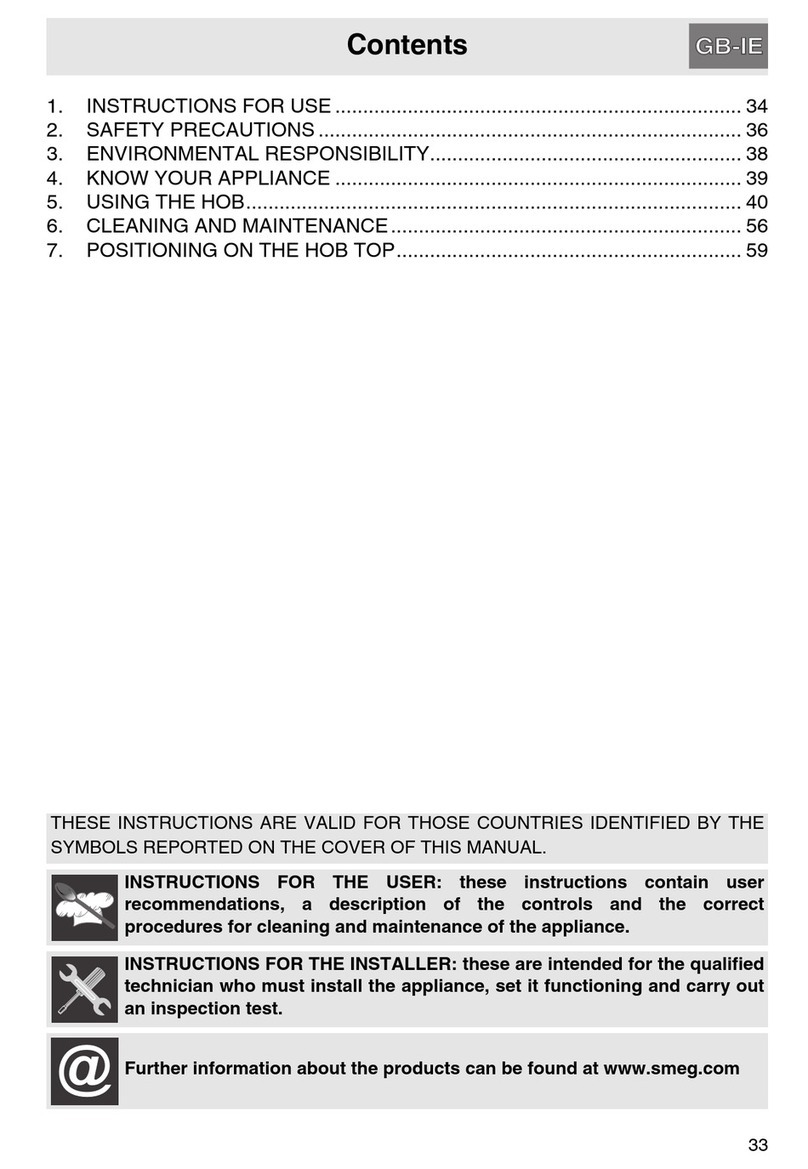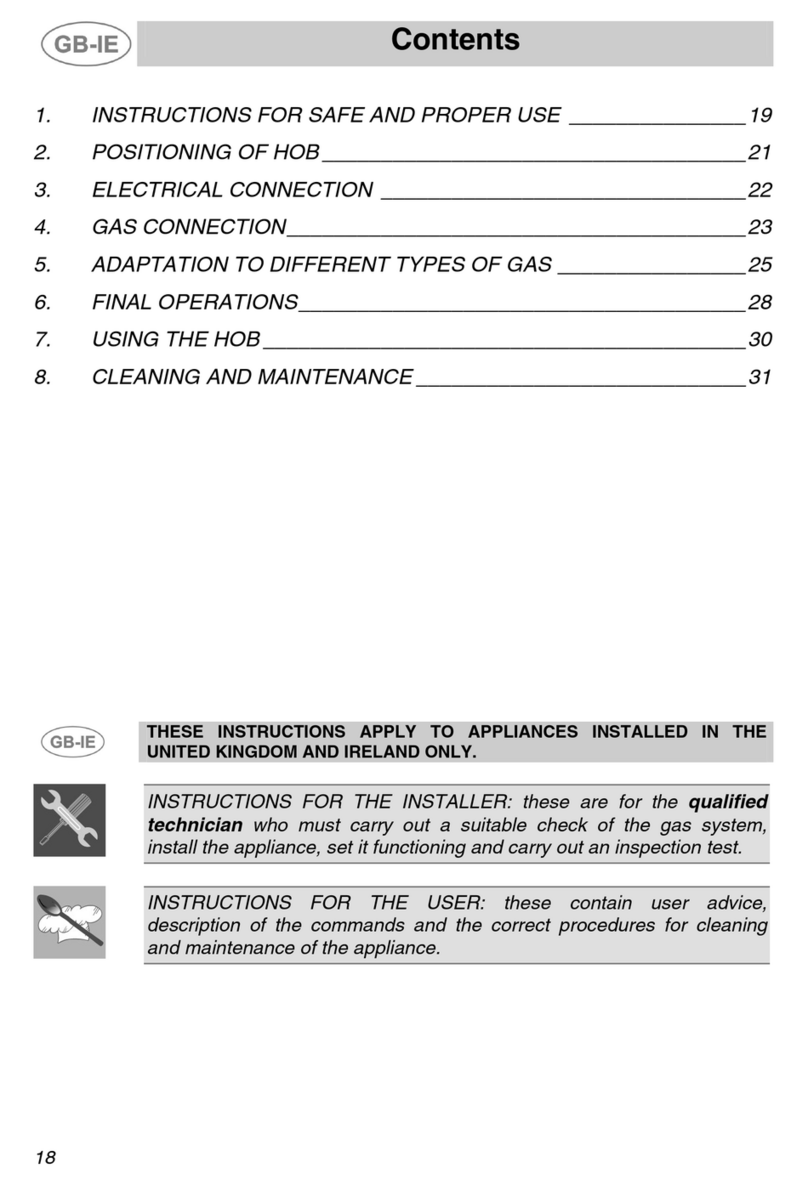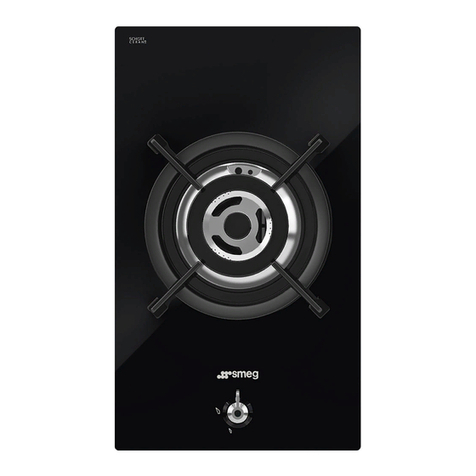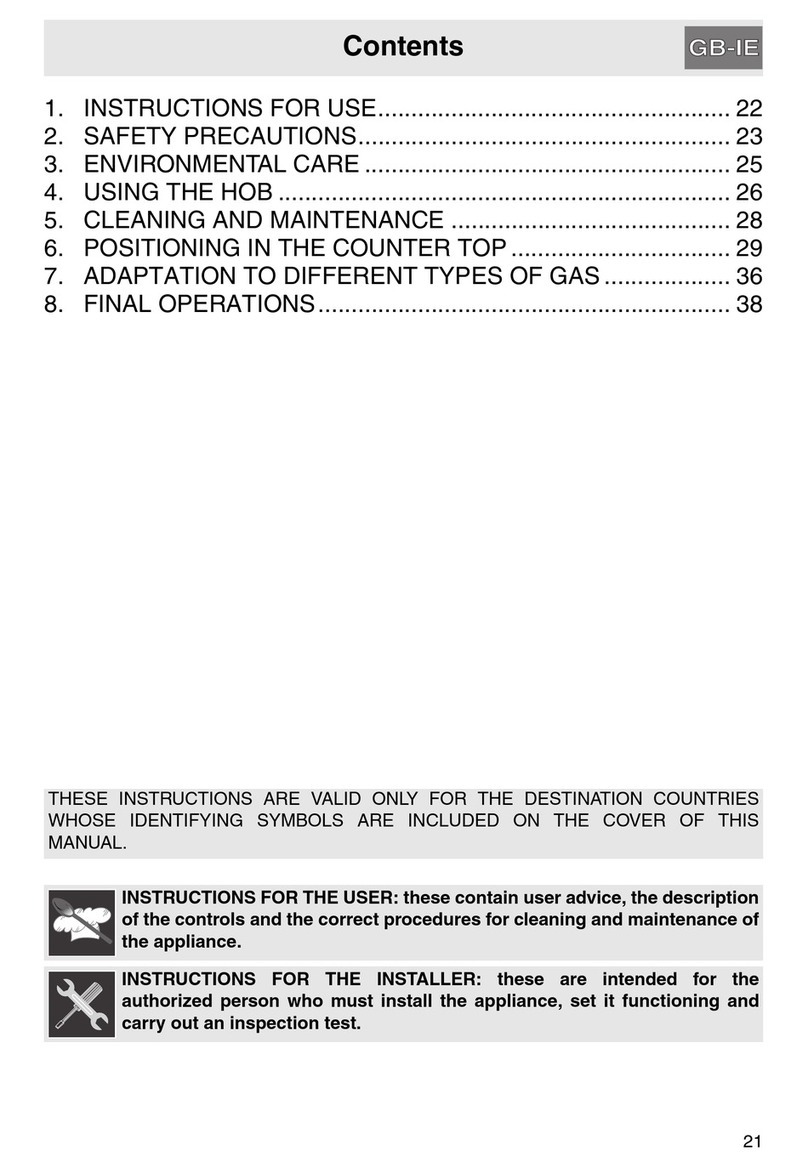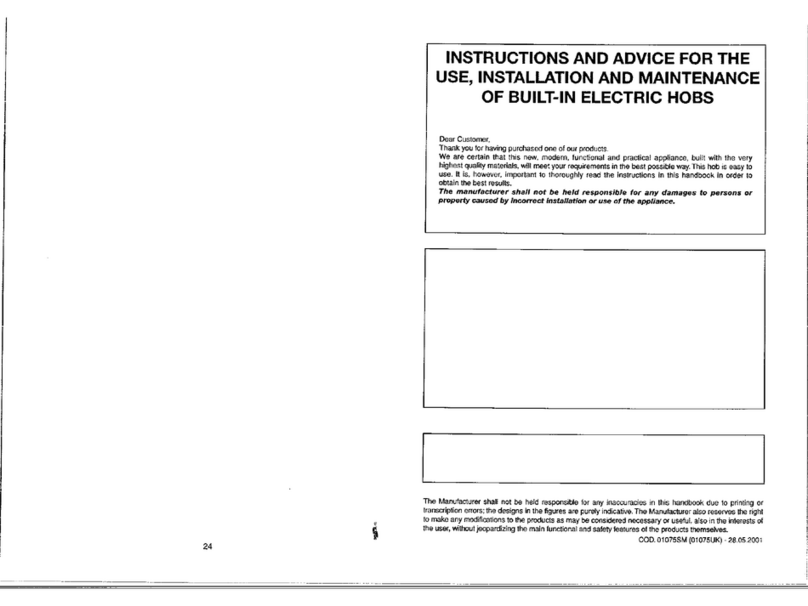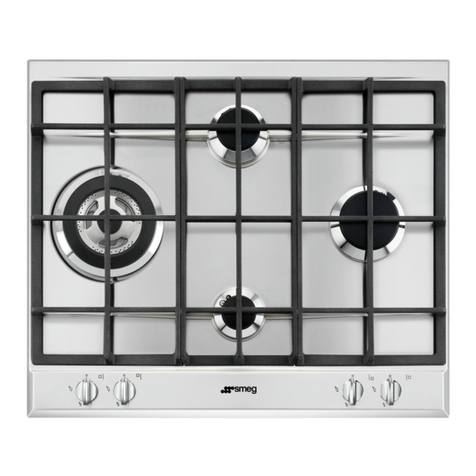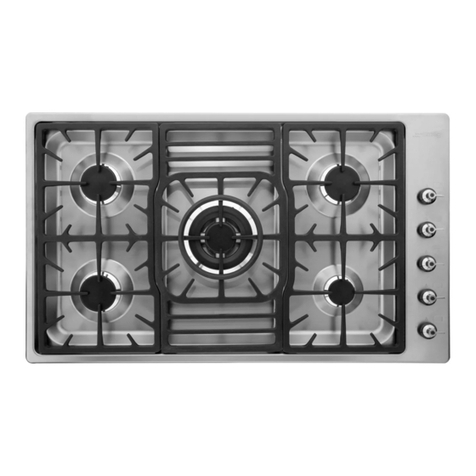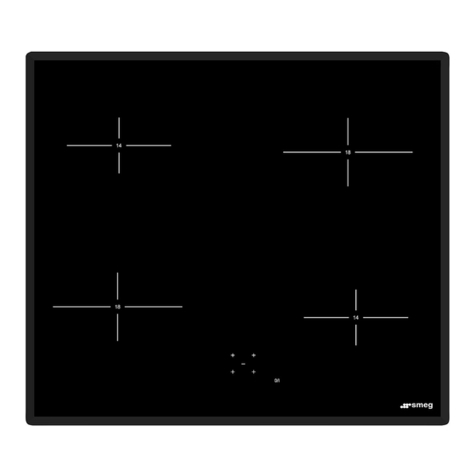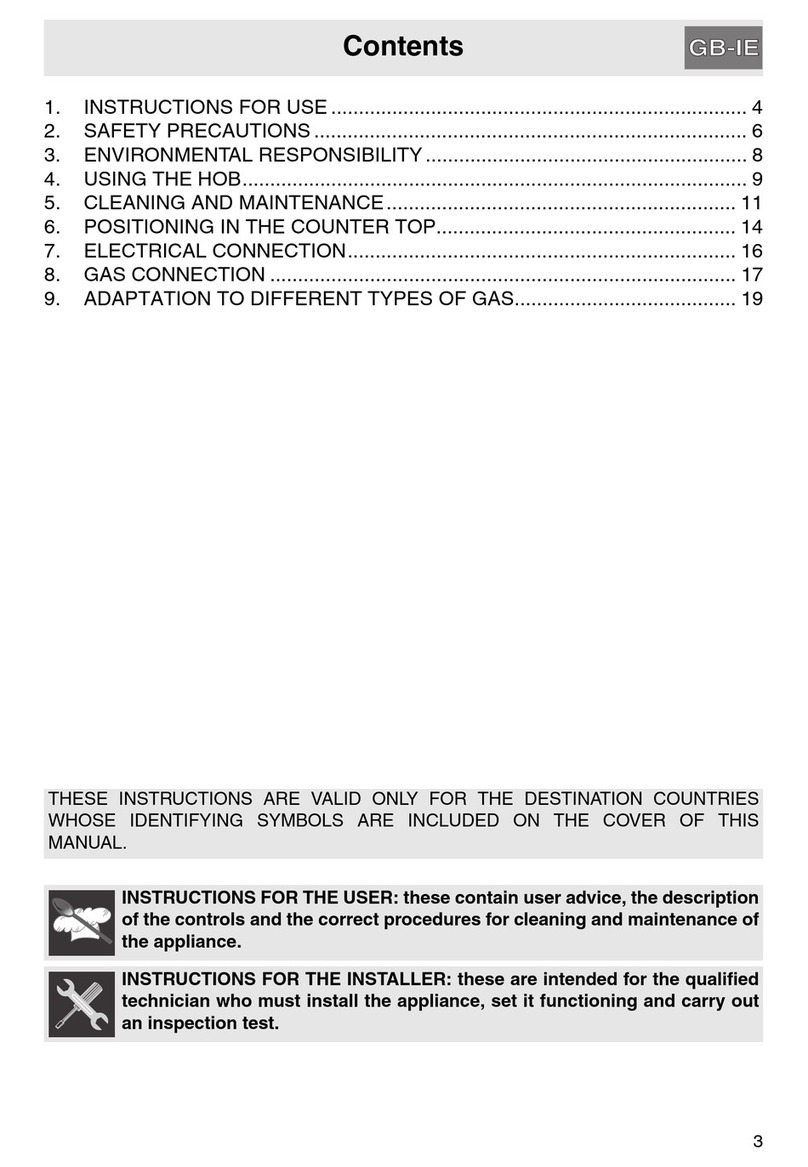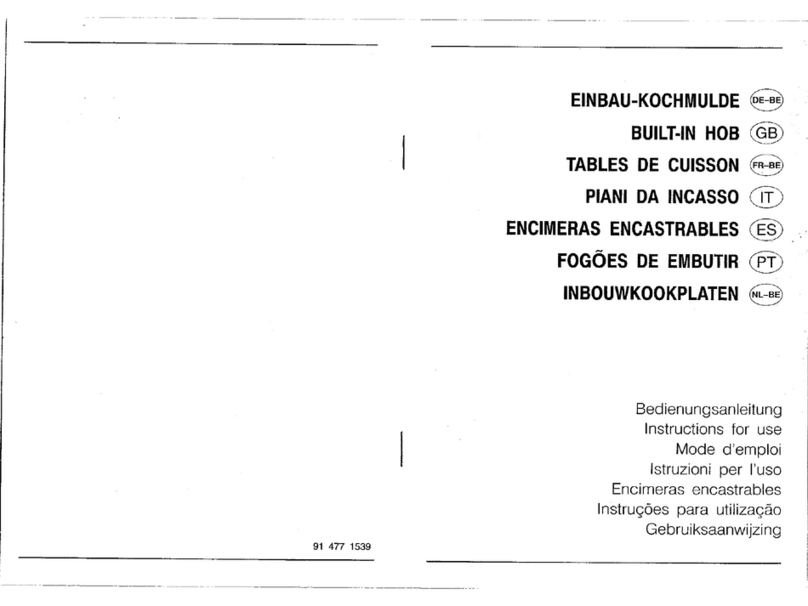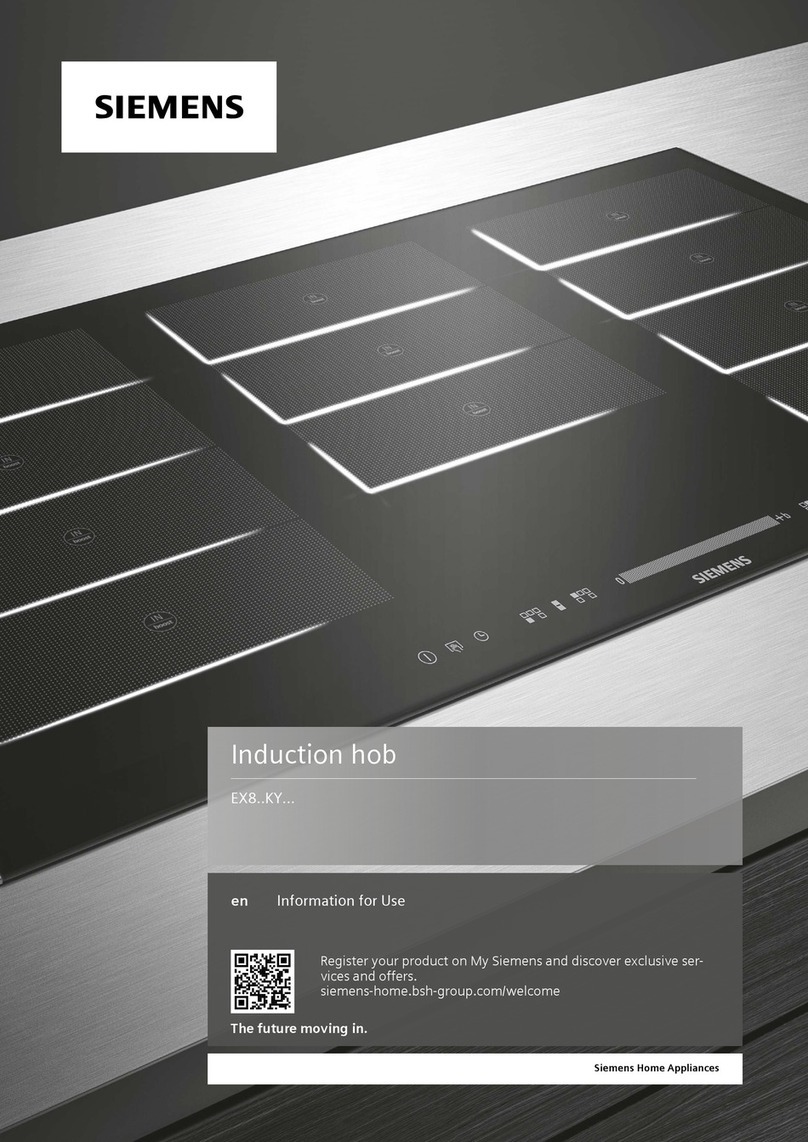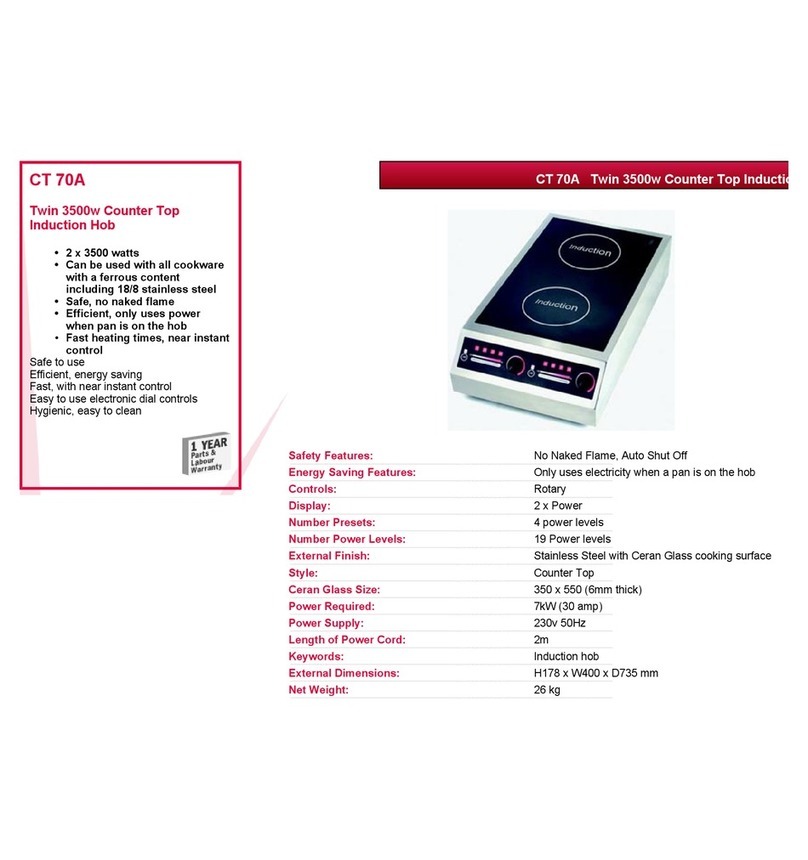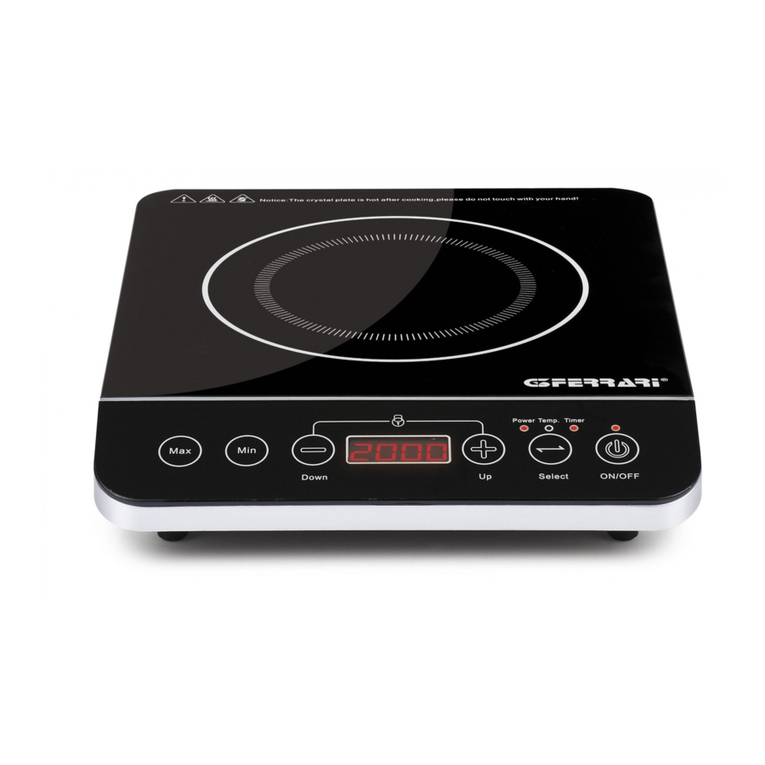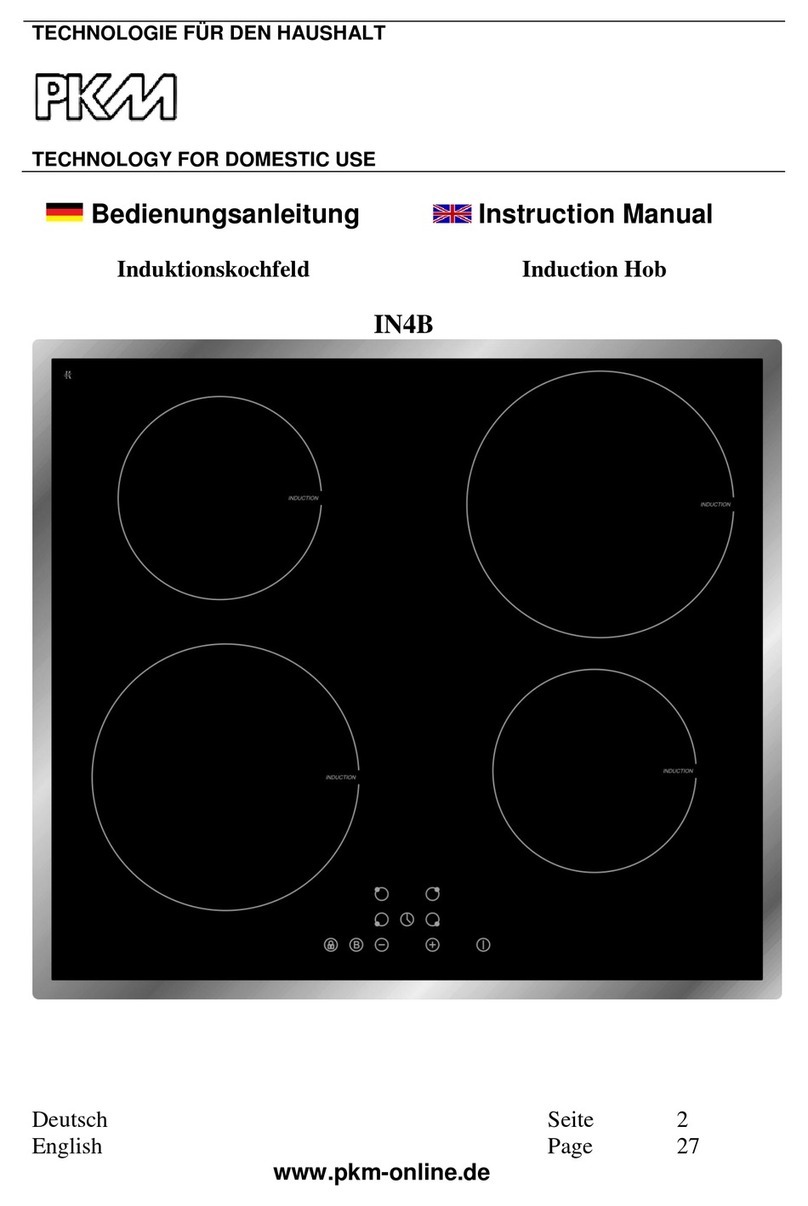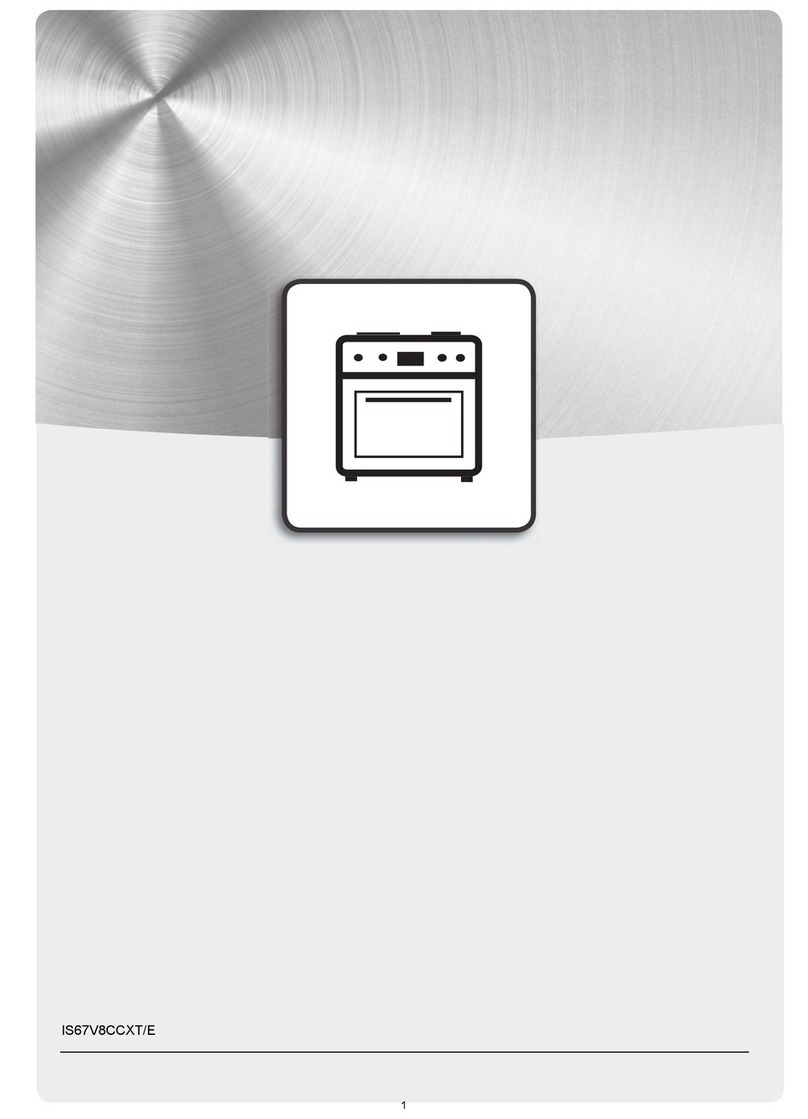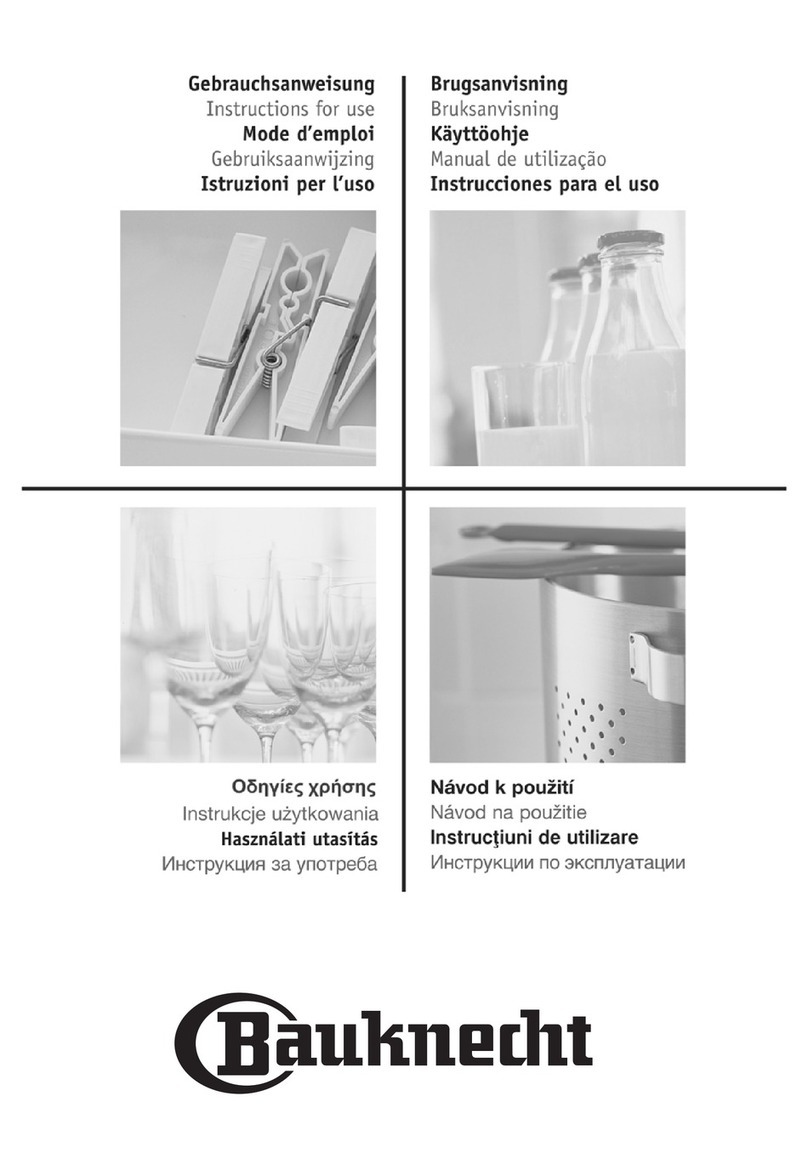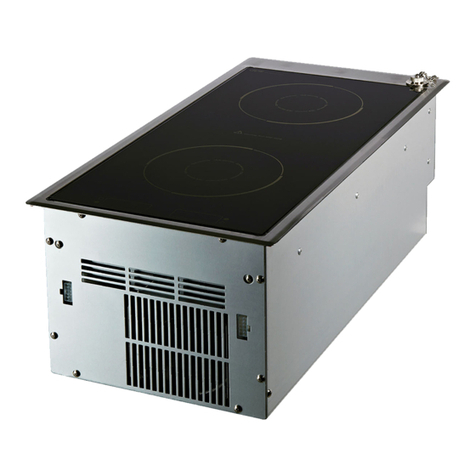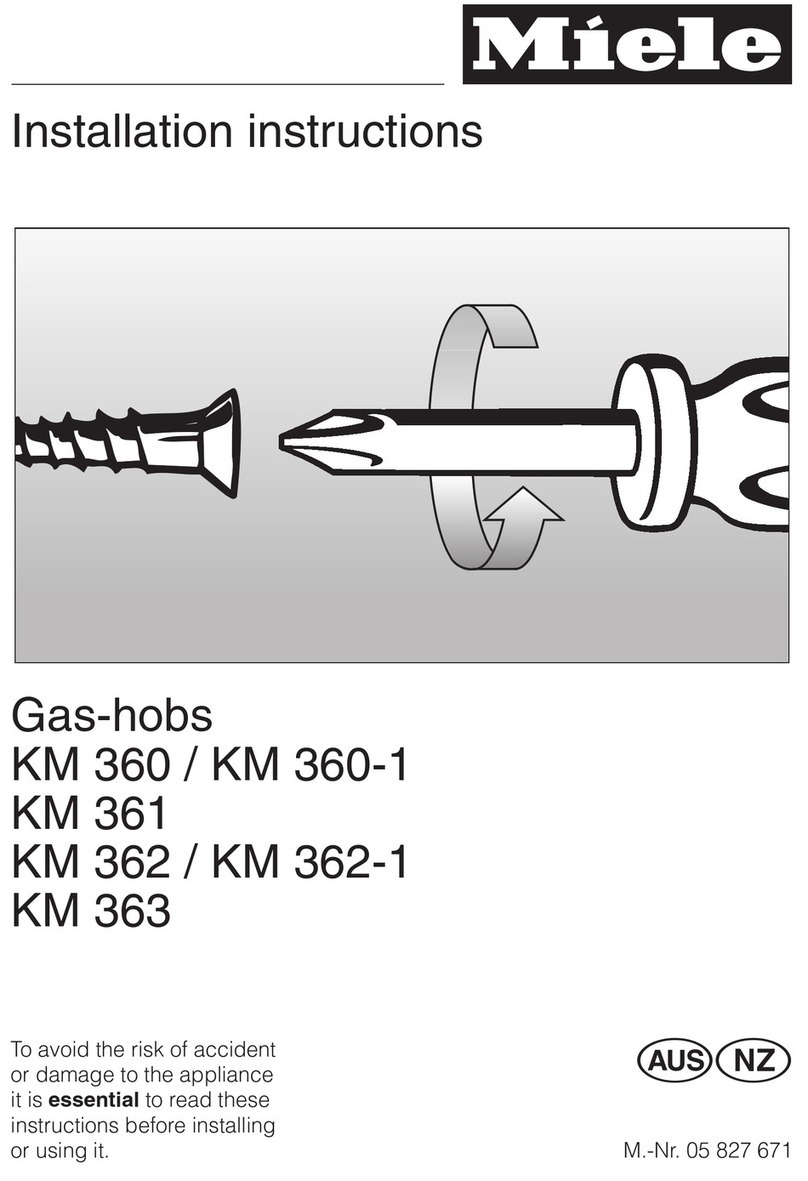
CLEANING AND MAINTENANCE - 3391477A872/A
• Keep a distance of at least 160 mm
between the griddle and the side and/or
rear wall, especially if it is placed on an
Ultra-Rapid burner.
• It is not recommended to use earthenware
or steatite griddles.
• Never use the griddle for more than 40
minutes.
CLEANING AND MAINTENANCE
Cleaning the hob
Cooking hob pan support grids
Remove the pan support grids and clean them in
lukewarm water and non-abrasive detergent.
Make sure to remove any encrustations. Dry
them thoroughly and return them to the hob.
Flame-spreader crown and burner caps
For easier cleaning, the flame-spreader crowns
and the burner caps can be removed. Wash
them in hot water and non-abrasive detergent.
Carefully remove any encrustation, then wait
until they are perfectly dry. Replace the flame-
spreader crowns, making sure that they are
correctly positioned in their housings with their
respective burner caps.
Igniters and thermocouples
For correct operation the igniters and
thermocouples must always be perfectly clean.
Check them frequently and clean them with a
damp cloth if necessary. Remove any dry
residues with a wooden toothpick or a needle.
Cleaning the surfaces
To keep the surfaces in good condition, they
should be cleaned regularly after use. Let them
cool first.
Ordinary daily cleaning
Always and only use specific products that do
not contain abrasives or chlorine-based acids.
Pour the product onto a damp cloth and wipe
the surface, rinse thoroughly and dry with a soft
cloth or a microfibre cloth.
Food stains or residues
Do not use steel sponges and sharp scrapers as
they will damage the surface. Use normal, non-
abrasive products and a wooden or plastic tool,
if necessary. Rinse thoroughly and dry with a soft
cloth or a microfibre cloth.
What to do if...
The hob does not work:
• Make sure that the hob is connected and
that the main switch is turned on.
• Make sure that there is no power failure.
• Make sure that the fuse has not blown. In
this case replace the fuse.
• Make sure that the circuit breaker of the
residential electrical system has not tripped.
In this case, reset the circuit breaker.
The cooking results are unsatisfactory:
• Make sure that the hob is properly
ventilated and that the air inlets are
unobstructed.
The hob smokes:
• Let the hob cool down and clean it once
cooking is complete.
• Make sure that the food has not spilled out
of the pan and use a larger cooking vessel,
if needed.
The fuses blow or the circuit breaker of the
residential electrical system trips repeatedly.
• Call Technical Support or an electrician.
The continuous contact between the
pan supports and the flame can cause
modifications to the enamel over time in
those parts exposed to heat. This is a
completely natural phenomenon which
has no effect on the operation of this
component.
